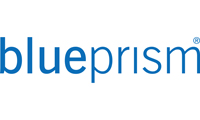With students increasingly expecting flexibility and a tailored experience, institutions should look to modern systems and processes to help them deliver
Technology can be harnessed to personalise the student journey at all stages of engagement – from recruitment and well-being to content delivery and assessment.
Panellists at a Times Higher Education round table, held in partnership with Blue Prism, discussed how technology and automation could deliver new solutions to personalise student journeys and reduce the pressure the pandemic placed on staff, which included doing more with fewer resources, launching new services and adapting to changing working environments and digital expectations from students.
Chair Alistair Lawrence, special projects editor at Times Higher Education, asked the panel which solutions had been identified to support students and staff.
Jo-Anne Murray, partnerships director at Higher Ed Partners and professor of educational innovation at the University of Glasgow, said automation could help provide learning and teaching at scale.
“More people have access to education now and that’s a really good thing, but being able to provide that personalised learning experience at scale…we definitely have to think about harnessing the use of technology to free up academics and humans to do the human elements that the technology can’t do,” Murray said.
Blue Prism software provides a “digital workforce” that can be allocated to administrative tasks, freeing people up to engage in higher-value work. Tony McCandless, chief technology officer for EMEA at Blue Prism, said that by automating certain processes, universities could improve the experience for staff as well as students at a time of great change.
“There’s a massive focus on students as customers, which I think is actually really healthy and very useful,” McCandless said. “It’s not just the students that are your customers, it’s the staff as well. And all of the transitions that they are going through are massively challenging.”
Julie McLeod, pro vice-chancellor of education at Birmingham City University, agreed that the pandemic had highlighted the need for personalised student journeys to be “customer-driven”.
“That means we’re challenging every single aspect of our design, our systems, the integration of the systems,” McLeod said. “That places an interesting challenge on all of us. We have some solutions which assist us and we need more solutions to assist us – that is clear. To a certain extent, that personalisation requires students to be very clear how they work best, what their journey is, how to engage.”
A student journey could be personalised from the moment they were recruited, said Michael Goodwin, recruitment marketing manager at the University of St Andrews. “Everybody has different needs and what they want to get out of education. And it is about tailoring that customer journey,” he said.
Catherine Chambers, head of digital education at Keele University, asked why universities weren’t making better use of their “content repositories” to design learning platforms like on-demand media companies. “My big question is where is the Netflix for education? Where is the iPlayer for teaching and learning?” she said.
Automation can be a useful tool for linking siloed systems, connecting data repositories and enabling the delivery of more digital and personalised student services that make use of these data to create the "Netflix for education".
Alison Hood, dean of teaching and learning at Maynooth University, a traditionally on-campus institution, said staff had “perceived a reduction in engagement” among students as a result of the pandemic. She said a student success project had been launched to reach out to those who might be struggling. “Certainly long term we want some more oversight of what students are doing, some kind of [customer relationship management] that actually connects the dots for us,” she said.
Neil Stokes, head of digital learning and teaching at De Montfort University, said in the past 18 months the student journey had become more technical, which meant staff have needed upskilling too. “We’re trying to integrate more technologies. Our staff are finding they’re setting up student learning journeys with this selection of technologies and they need guidance and support to do that,” he concluded.
The panel:
- Catherine Chambers, head of digital education, Keele University
- Hamish Derrick, account director, public sector, Blue Prism
- Michael Goodwin, recruitment marketing manager, University of St Andrews
- Alison Hood, dean of teaching and learning, Maynooth University
- Alistair Lawrence, special projects editor, Times Higher Education (chair)
- Tony McCandless, chief technology officer, EMEA, Blue Prism
- Julie McLeod, pro vice-chancellor of education, Birmingham City University
- Jo-Anne Murray, partnerships director at Higher Ed Partners and professor of educational innovation at the University of Glasgow
- Alastair Robertson, director of academic development and student learning, Glasgow Caledonian University
- Marcus Saunders, associate director of technical resources, University of the Arts
- Neil Stokes, head of digital learning and teaching, De Montfort University
- Juan Villamil, chief information officer, Imperial College London
Watch the round table on demand above or on the THE Connect YouTube channel.
Find out more about Blue Prism.

